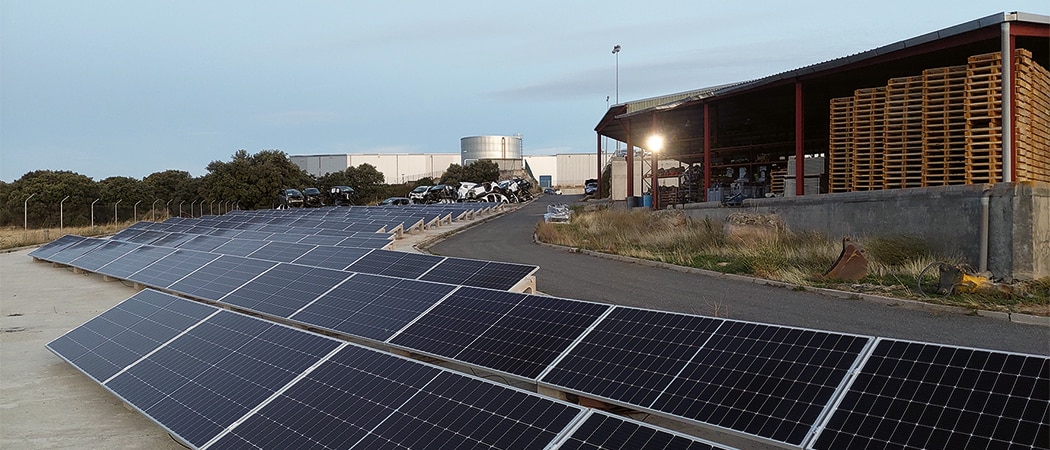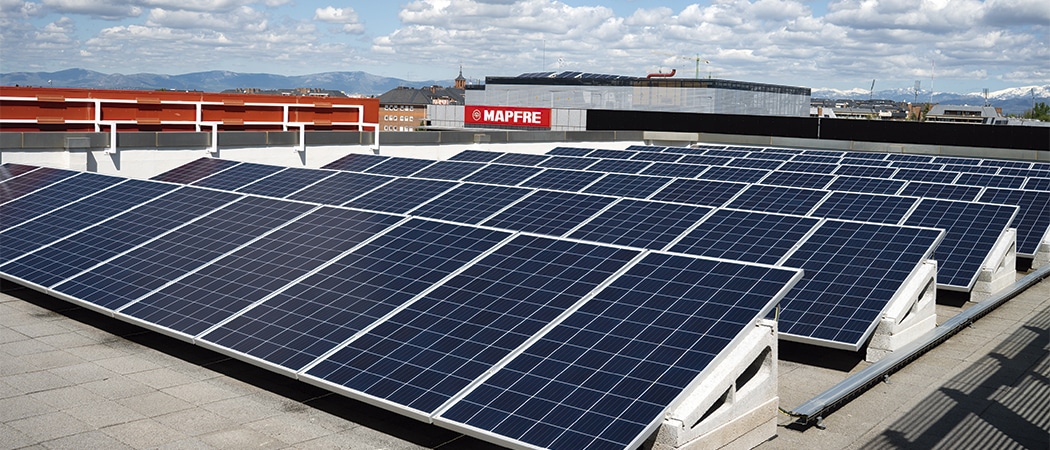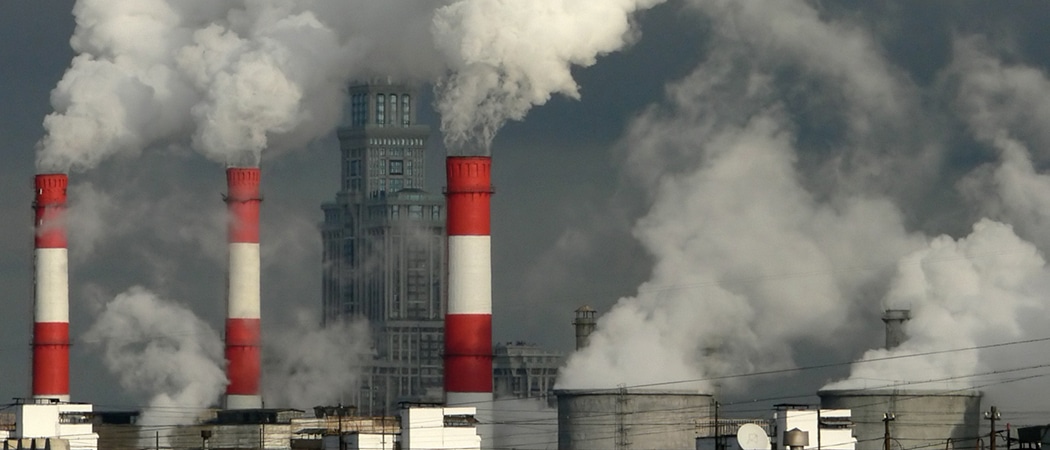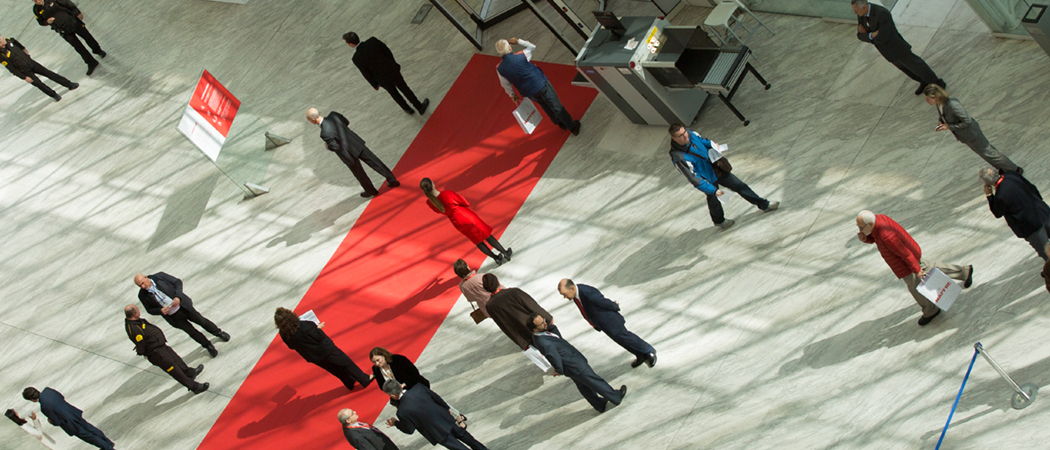Solar facilities at Cesvimap in Ávila
TEXT NURIA DEL OLMO| IMAGES MAPFRE, ISTOCK
MAPFRE has installed around 5,000 solar panels in buildings across Spain that will generate 40% of their own annual electricity supply, equivalent to 700 tons of CO2. Over the course of 2023, the solar energy project will also be rolled out at another 25 large properties in Spain, as well as other countries like Brazil, Mexico and Turkey. A clean example of the commitment
to decarbonizing the economy, key to protecting the planet.
MAPFRE aims to promote a real transformation through the ambitious objectives indicated in its Sustainability Plan, including contributing to the decarbonization of the economy as an essential factor in protecting the planet. Our environmental commitment is to continue raising the standards for sustainability firmly and progressively, guiding society in a fair transition and helping our customers and people who depend on the company’s activity to also move in the right direction.
To this end, all energy we currently acquire in Spain is from 100 % renewable sources, which generate no pollution or greenhouse gases. One example of this can be seen in MAPFRE’s recent commissioning of one of the most comprehensive and unique photovoltaic solar self-consumption facilities in Spain. In just six months it has developed a project with 2 MW of capacity, involving the installation of a total of 4,700 state-of-the-art solar panels on the roofs, parking garages, facades and floors of the four buildings that make up the corporate headquarters in Majadahonda (Madrid).

740 tons of CO2 per year
Iberdrola designed this comprehensive, tailor-made solution, which spans an area of approximately 5,700 square meters and adds to the 700 panels installed by MAPFRE in 2020, also in collaboration with the electricity company. The new facility will generate 3.1 GWh per year, allowing MAPFRE to generate 40% of its own electricity consumption per year at its headquarters in Madrid, with production peaks covering 95% of total demand. This renewable production will prevent the release of 740 tons of CO2 into the atmosphere each year. The green energy generated by the solar panels will cover a large part of the electricity demand generated by the daily running of the company’s offices, including the 48 free charging posts offered by MAPFRE to employees who use electric cars or plug-in hybrids.
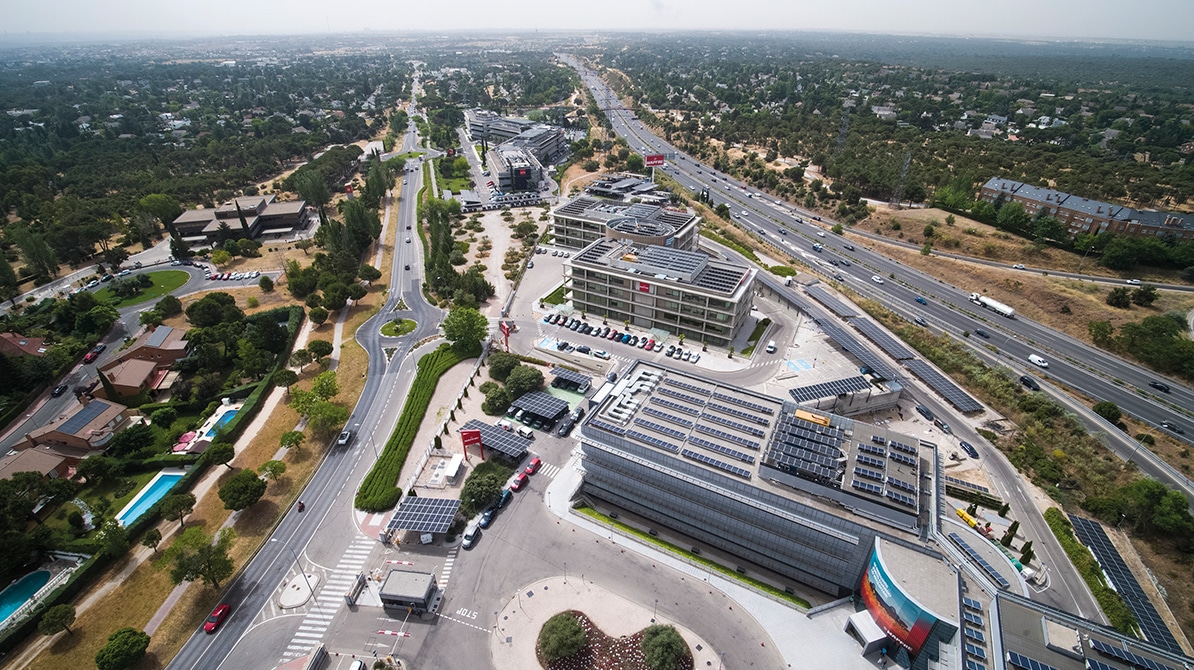
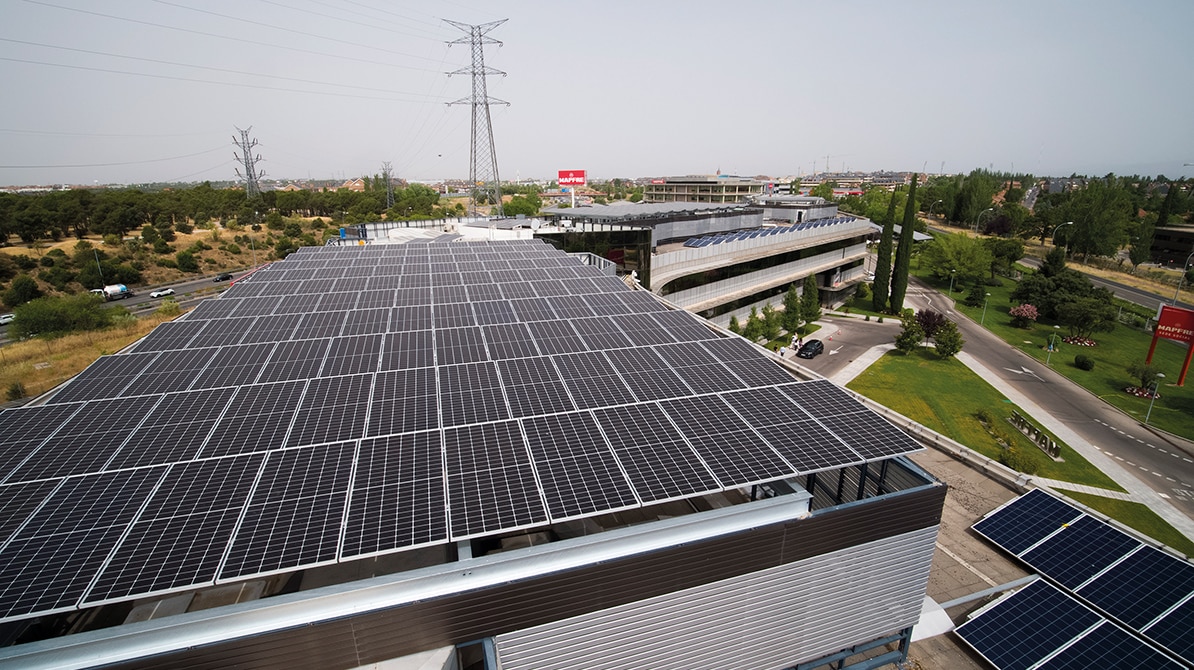
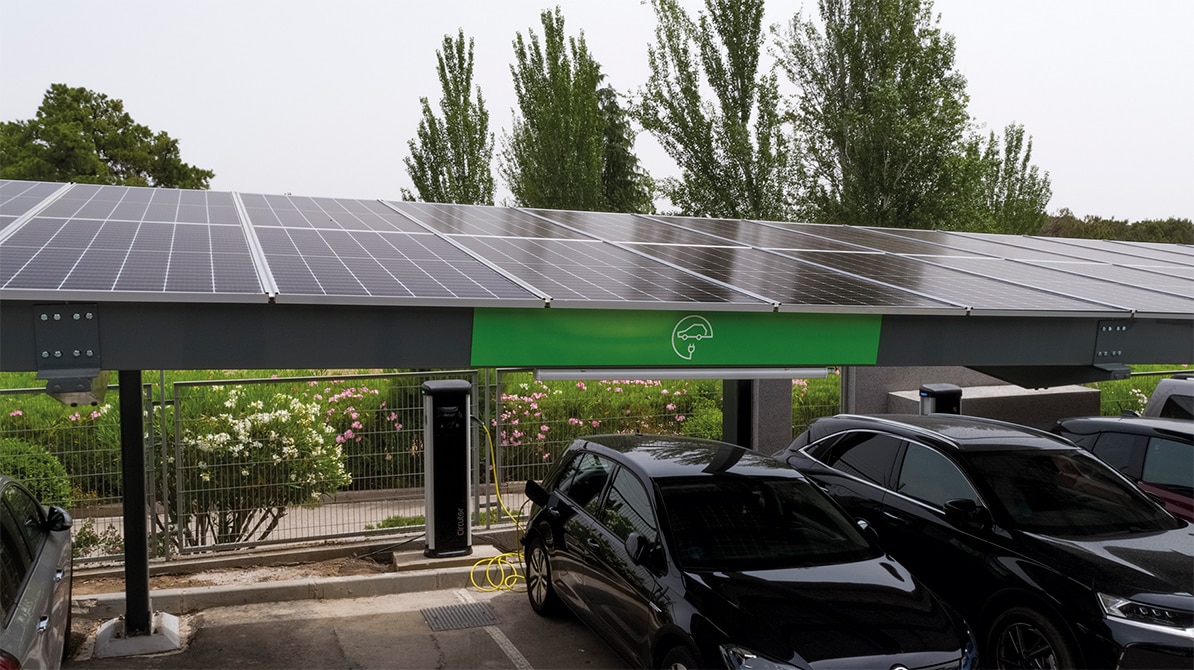
MAPFRE’s Majadahonda headquarters: bird’s eye view, solar roofs and panels for cars
More offices and countries
MAPFRE intends on expanding the scope of this project to other countries, like Brazil, Peru, Mexico and Turkey, as well as another 25 large properties owned by the insurance company in Spain. This includes the Data Protection Center (CPD) in Madrid, a project that has so far seen a total of 1,855 state-of-the-art panels installed, distributed across the building’s roofs, parking garages, facades and floors. This solution, which will generate 987 MWH per year, will help MAPFRE to self-supply 9% of its current annual electricity consumption and prevent the release of 235 tons of CO2 into the atmosphere each year. This solar installation will soon enter its second phase, with a further 1,000 panels added, generating 15.5% of the electricity consumed by this space per year.
Green energyand circular economy
CESVIMAP has also started using clean renewable energy through its Second Life program, which involves reusing battery modules from decommissioned electric vehicles and building battery packs, which it installs in assistance vehicles to provide recharging facilities to electric vehicles whose battery has gone flat in city centers.
This center, which disassembles, recovers and reintroduces car components in very good condition into the aftermarket, has developed a 100 kWh energy storage system using batteries from eight Renault Fluences, which were scrapped at the facility. This system is connected to a 53 kWp photovoltaic installation consisting of 126 solar panels, which allows renewable energy to be accumulated in recovered, reconditioned and reused batteries at that same facility. The project is a clear example of the circular economy and its photovoltaic facility is now online, having completed the installation, connection and testing phase on the energy accumulator at the end of 2022.
CESVIMAP has also started using renewable clean energy as part of its Second Life program.
The center has developed a 100 kWh energy accumulation system using the batteries from eight Renault Fluence cars, which had been scrapped at the facilities.
connected to a 53 kWp photovoltaic installation consisting of 126 solar panels, it allows renewable energy to be accumulated in recovered, reconditioned and reused batteries at that same facility.

How is MAPFRE contributing to decarbonization?
Decarbonization refers to anything that helps eliminate the use of fossil fuels that contain carbon, such as coal, oil and natural gas, and that release energy, pollutants and greenhouse gases when combusted. One of the most abundant greenhouse gases produced by human activity is carbon dioxide (CO2). It causes warming of the atmosphere near the earth’s surface and has highly negative consequences for the climate.
Reducing MAPFRE’s environmental footprint is a key element of our environmental responsibility performance and demonstrates that we want to be an active part of the necessary and urgent transformation to a low-carbon economy. This challenge involves understanding your current carbon footprint and identifying short, medium and long-term strategies to reduce it and offset the part that we cannot eliminate. Here are the most important aspects of MAPFRE’s strategy in this regard:

Commitments:
We have officially committed to being carbon neutral in all the countries we operate in (2030); achieving net zero emissions in our insurance and reinsurance underwriting portfolios by 2050; and not insuring or investing in coal, gas or oil companies that do not have an energy transition plan.

Partnerships:
We have signed agreements with major firms such as Iberdrola, with whom we will invest up to 800 million euros in renewable energy.

Products:
We offer personalized and 100% renewable Iberdrola products through our sales network; we have the Change range, insurance for MAPFRE’s electric and hybrid vehicle fleet; and we have launched the first MAPFRE Renewable Energy fund.

Energy savings:
In our offices we promote reduced energy, water and paper consumption; we encourage mobile working; we are reducing the number of business trips (by airplane and car); and we are encouraging waste management. Thanks to all these measures, MAPFRE reduced its energy consumption by 23,064,812 kWh last year, 15.3% down on 2020, going beyond the planned target of slashing 2% in 2021. Thanks to this decrease in consumption, we have prevented the release of 4,860 Tm of CO2e into the atmosphere.

Green buildings:
MAPFRE owns 13 buildings, such as Torre MAPFRE in Barcelona, with LEED, BREEAM or Energy Star certifications (leading Energy Efficiency and Sustainable Design seals). These certifications confirm that these spaces have been built and designed to reduce their environmental footprint through energy conserving, including by making efficient use of water, reducing CO2 emissions, creating an improved indoor environment and minimizing the use of natural resources, among others.

